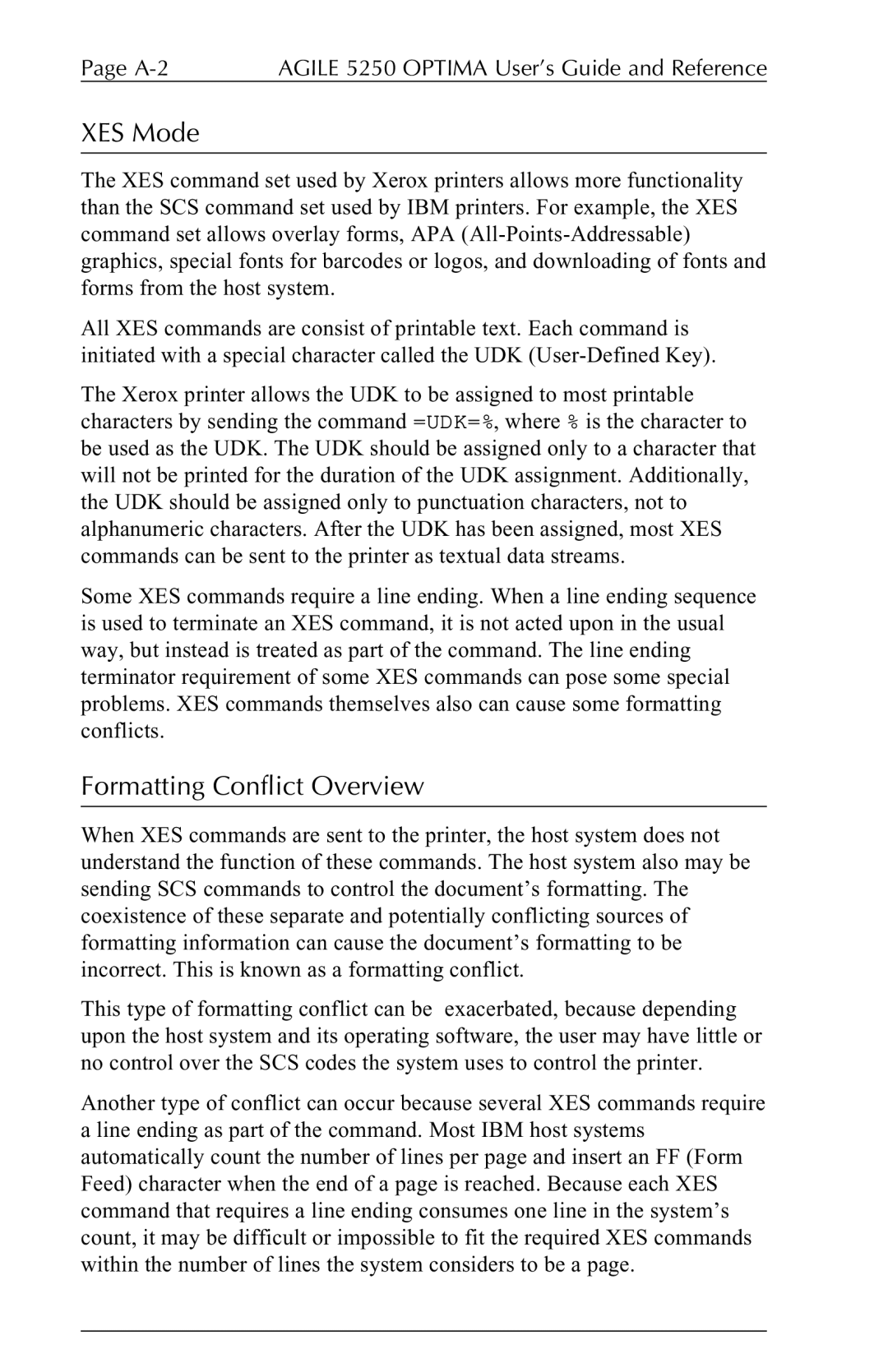
Page | AGILE 5250 OPTIMA User’s Guide and Reference |
XES Mode
The XES command set used by Xerox printers allows more functionality than the SCS command set used by IBM printers. For example, the XES command set allows overlay forms, APA
All XES commands are consist of printable text. Each command is initiated with a special character called the UDK
The Xerox printer allows the UDK to be assigned to most printable characters by sending the command =UDK=%, where % is the character to be used as the UDK. The UDK should be assigned only to a character that will not be printed for the duration of the UDK assignment. Additionally, the UDK should be assigned only to punctuation characters, not to alphanumeric characters. After the UDK has been assigned, most XES commands can be sent to the printer as textual data streams.
Some XES commands require a line ending. When a line ending sequence is used to terminate an XES command, it is not acted upon in the usual way, but instead is treated as part of the command. The line ending terminator requirement of some XES commands can pose some special problems. XES commands themselves also can cause some formatting conflicts.
Formatting Conflict Overview
When XES commands are sent to the printer, the host system does not understand the function of these commands. The host system also may be sending SCS commands to control the document’s formatting. The coexistence of these separate and potentially conflicting sources of formatting information can cause the document’s formatting to be incorrect. This is known as a formatting conflict.
This type of formatting conflict can be exacerbated, because depending upon the host system and its operating software, the user may have little or no control over the SCS codes the system uses to control the printer.
Another type of conflict can occur because several XES commands require a line ending as part of the command. Most IBM host systems automatically count the number of lines per page and insert an FF (Form Feed) character when the end of a page is reached. Because each XES command that requires a line ending consumes one line in the system’s count, it may be difficult or impossible to fit the required XES commands within the number of lines the system considers to be a page.
